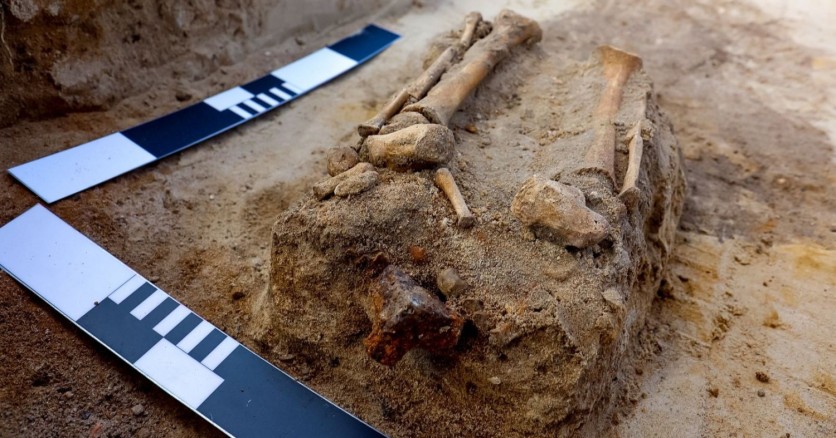In a startling revelation, archaeologists from the Institute of Archeology at Nicolaus Copernicus University have unearthed remains that provide intriguing insights into a 17th-century burial site. Among the discoveries, the remains of a child encumbered with enigmatic rituals, have come to light.
Led by Dr. hab. Dariusz Polinski, Prof. NCU from the Department of the Middle Ages and Modern Times, the research team has been investigating Dąbrowa Chełmińska for early medieval and modern graves.
In a remarkable find last year, researchers located the burial of a young woman who was laid to rest with unusual protections against rising from the grave-a triangular padlock on her big toe and a downward-pointing sickle around her neck. This woman gained media attention as a "vampire."
This year's excavation season brought forth more intriguing burials with special treatments of the deceased. Among them, a unique burial of a child aged around 5-7 was discovered, positioned face down in the grave pit.

Fear of the Deceased's Activity After Death
This arrangement suggests a fear of the deceased's potential activity after death, possibly a threat to the living. Strikingly, the child's remains were accompanied by a triangular padlock, similar to the one found with the "vampire." Despite the disturbed nature of the grave, only the lower leg bones and the padlock remained.
Another extraordinary burial was found near the vampire grave, featuring several children's skeletons clustered together.
A greenish tint observed on these remains and the vampire's palate raised questions about the potential connection between the two. It's speculated that the green plaque resulted from a medical treatment involving gold suspension therapy.
Atypical Burial of a Pregnant Woman
The researchers also uncovered an atypical burial of a pregnant woman, her fetus still preserved in her womb. Notably, the burial pit was located in a challenging, stony structure, a departure from the typical sandy areas.
The research team plans to continue their work in studios and labs to reveal more secrets about these intriguing burials. DNA tests on the vampire are expected to shed light on her characteristics and possible genetic conditions.
The researchers will also conduct various tests involving medics and paleopathologists. The necropolis in Pniu is gradually unveiling its character, suggesting that it might have been a cemetery for individuals excluded from the community, possibly Lutherans, Mennonites, and the poor, according to the team.
As the puzzle pieces come together, the researchers hope to gain a comprehensive understanding of this unconventional cemetery and its historical significance.
Related Article : Archaeologists Find an Extremely Rare 1,300-year-old Gold and Gemstone Necklace From a Medieval Woman in England


![Apple Watch Series 10 [GPS 42mm]](https://d.techtimes.com/en/full/453899/apple-watch-series-10-gps-42mm.jpg?w=184&h=103&f=9fb3c2ea2db928c663d1d2eadbcb3e52)


